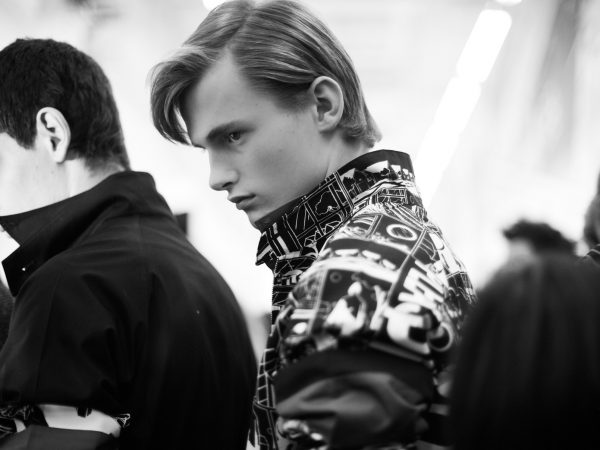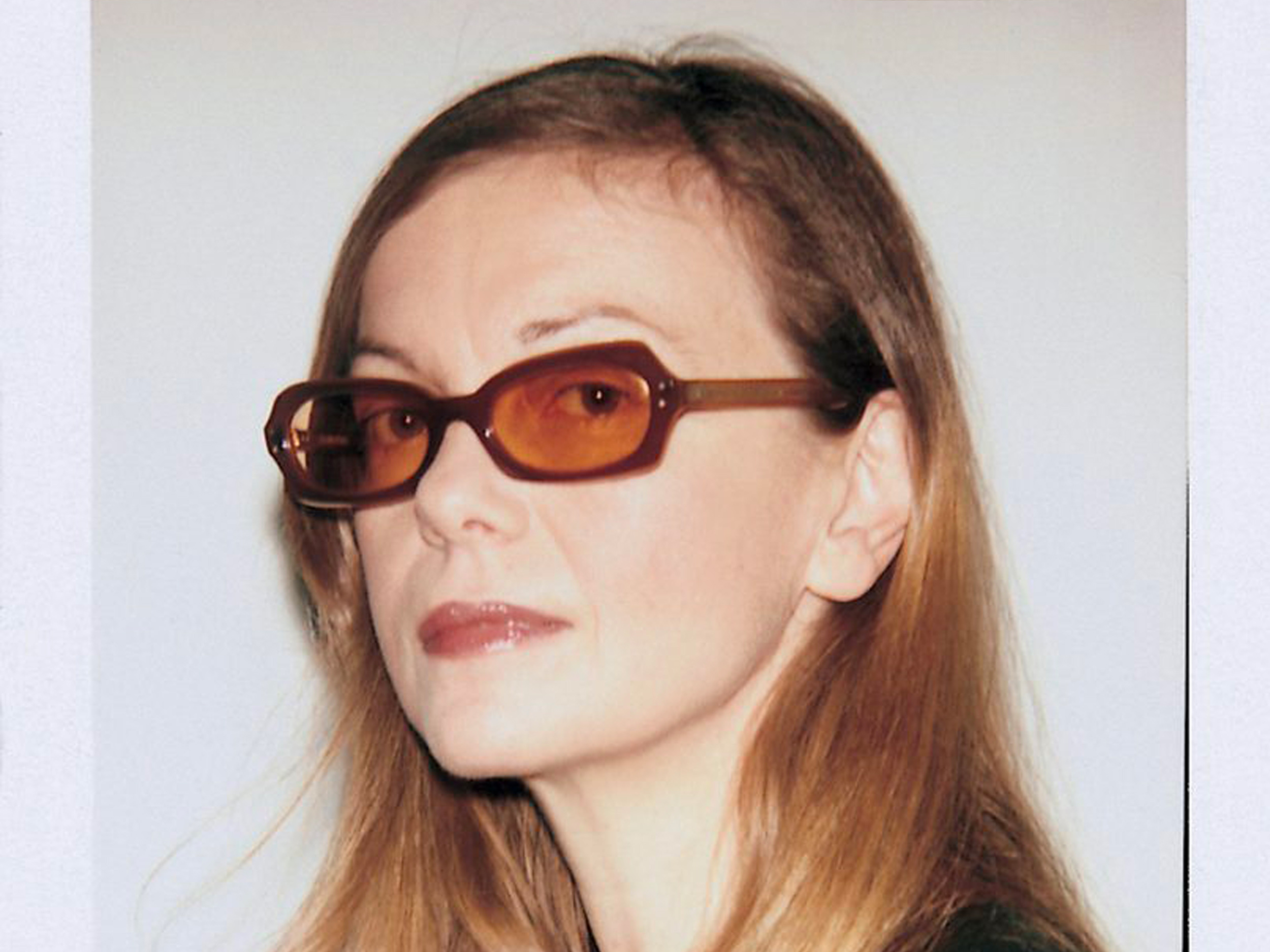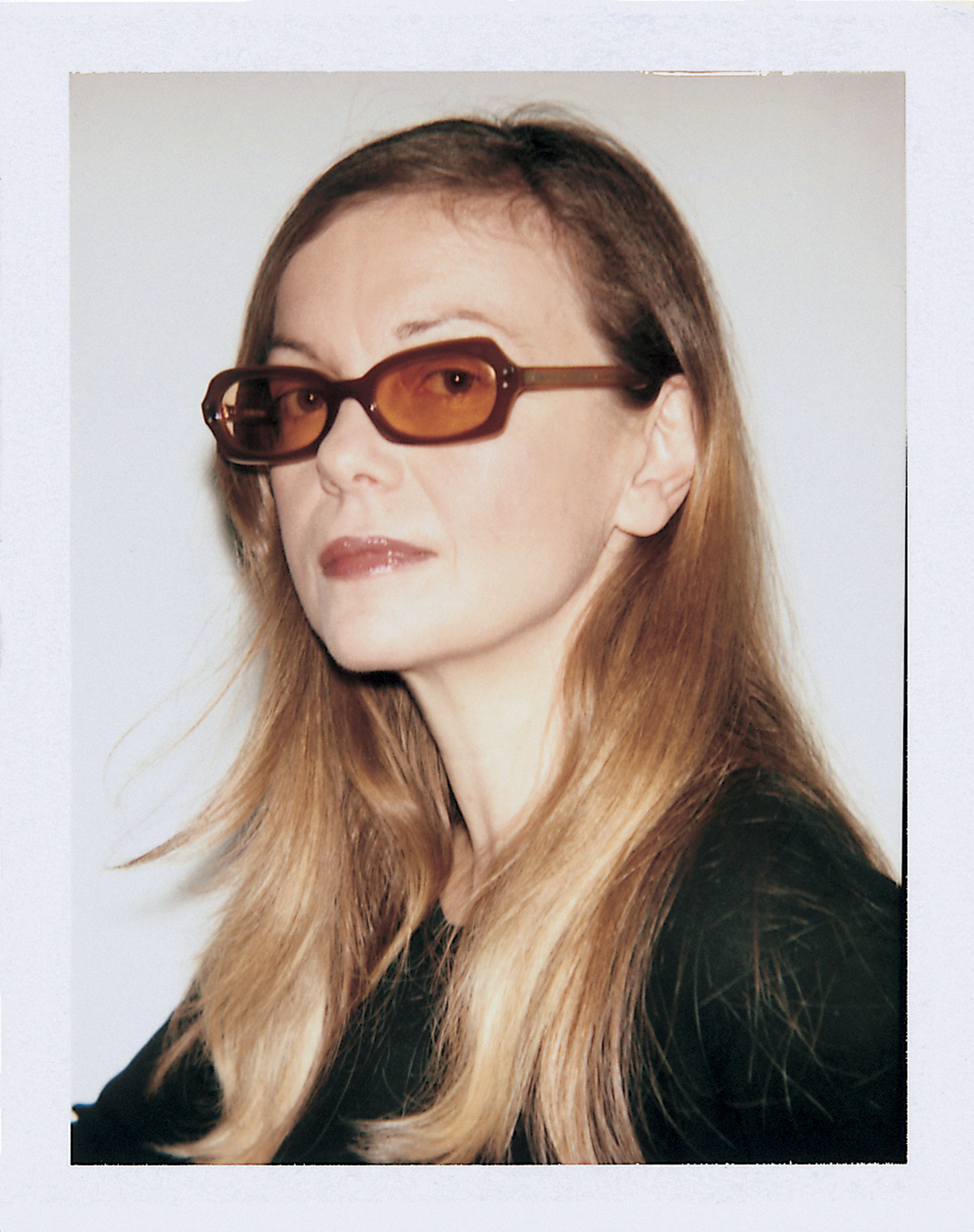Once praised by Karl Lagerfeld as “the only living French designer,” Martine Sitbon—who took the reigns of Chloé from 1987 to 1992, years after Lagerfeld himself had stepped down, reinvented the fashion house anew with a fresh, romantic glamour—has lived in two worlds. The first, the celebrity-friendly place of glitzy couture; and the other, her eponymously-named line, which lived on the radical edge, subverting Parisian femininity with spicy rock ‘n’ roll. Afterward, she would head Byblos and the now-defunct Rue du Mail. Inspired by the jagged corners and soft curves of each end of the spectrum, Sitbon truly realized the concept of hard meets soft. In her first-ever monograph, “Martine Sitbon: Alternative Vision,” co-written with husband and noted art director Marc Ascoli for Rizzoli, the designer recounts significant moments from her past and carefully focuses on the garments themselves that have defined not only her lifetime but ours as well. Here, the couple speak about the forthcoming book, their 30-year relationship, and the need to stay creative.
Above The Fold

New Artifacts

Realized Attraction: Backstage Milan Fashion Week Autumn/Winter 2017

Ephemeral Relief: Backstage Milan Fashion Week Men’s Spring/Summer 2018

Revelations of Truth
Joshua Glass—A project of this scale is no easy task. What brought you to this moment of writing a book? Why now?
Martine Sitbon—I’ve never done a book before. I never wanted to, because I always knew it would be something that I had to get fully immersed into. If I did it, I wanted to do it deeply, because I have a long, long career. I started in 1986! So I wanted to take the time to really go through the whole project; to really get to what was important and share with the lecteur moi dire—the reader—the experience of how I worked on each collection, what my inspirations were, and all of that. I stopped [designing] Rue du Mail two years ago, so I finally had the time to do all this.
Marc Ascoli—[Laughing.] It’s not because you have more time now, it’s actually a very chaotic moment!
Joshua—Perhaps more than timing, what does the book signify about your perspectives?
Marc—It makes an important point about personality and the process of collaboration. It’s a freedom of témoignage…testimony. The system of fashion is totally different today. I’m nostalgic when I say that. It’s…something else. The quality we promoted for almost three decades was absolutely based on being together, imagining things, and creating desire. This book is a message to be yourself and to do personal things. If you have clear ideas, you can make them work. It’s not only an anthology of the best photographers in the world; when the idea of the book first dawned on Martine, she was thinking of the young girls and boys that want to be in fashion. It’s possible to create if you imagine.
Martine—I also wanted to share the testimony of the 90s. The freedom and that spirit of creativity.
Joshua—A reflection of the era. Speaking of which, during that time you were the designer for Chloé, reinvigorating the fashion brand with new rules of modernity. What inspired you to transform it in the way that you did, and how did that play into the rest of your body of work?
Martine—I was approached by the house maybe one or two years after starting my [brand] in the 80s. They wanted this not “girly” but very feminine kind of fashion. The girl in my own collection was more…not rock ‘n’ roll but younger, maybe more rebellious. I designed both lines; I didn’t stop. It was interesting, because I separated myself in a sense to do Chloé. I also loved the couture aspect. I loved the clothes! The relationship to the—not manufacturing, how do you say—the work of the…
Joshua—Construction?
Martine—Yes! The construction and all the ateliers. The savoir-faire of the couture. For me, it was interesting, because I was separating the woman and taking on both parts. I’ve always liked women to have opposite sides. I arrived at Chloé many years after Karl Lagerfeld. He did a fantastic job in the 70s, but when I got there it was becoming very old. It seemed the house had fallen asleep. They had me there to revamp it, to make it more modern. This was the period of the supermodels, you know, Linda [Evangelista], Naomi [Campbell], Tatjana [Patitz], Christy Turlington, and Helena [Christensen]. I was using all these girls for Chloé, because [the company] had this image of very glamorous women. At the same time, in my own collection, I had girls like Kirsten Owen and Kristen McMenamy. I tried to give Chloé some strength and romance, but all in a very glamorous way: couture to bring it back to the spot of decadence.
Joshua—As you mentioned, the two of you have been working together for over three decades. When did you first meet and when did the relationship go from collaborators to marriage?
Marc—We met each other through a friend of ours named Liberté. It’s a true story! “Freedom.” It’s funny because I wouldn’t believe that sort of situation, but after 30 years all I can say is, “Oh, c’est extraordinaire!”
Martine—We are both very obsessed with pictures, magazines, and movies. We have a big interest in cultural things. When couples have different interests in life they get bored after a while, but we never have. Our base is very deep and we still have that. When we find a picture or something interesting, we always share it. We’re both very curious.
Marc—At the beginning, we were working together and she was traveling a lot. She was in India, in New York, and I was totally jealous, because I was staying in Paris. Once, she sent me a letter about how her trip to India was beautiful, blah, blah, blah, blah. She said, “Oh, I met a guy there! He is so beautiful, so sexy.” I don’t know, I don’t remember the words. I said, “My, my.” I started to be…I was almost jealous! [Laughing.] She told me something that made me think it was not only friendship, that something happened together. But nothing did, and, instead, our relationship grew. Since then, we’ve been together. We didn’t want to make children; we think there are too many children already on the planet.
Martine—And we had too much work!
Marc—And we had too much work, because we never stop working together. Voila! I get along very well with her family, because she was born in Morocco. I was born in Tunisia, her father was Tunisian. My father was Italian, her mother was Italian. We have similar backgrounds, and we understood pretty rapidly that to be together was something constructive.
Martine—It was stronger.
Marc—That’s something very simple, you know. Simplicity exists! [Laughing.]
Joshua—Are there obstacles to working with a partner when you’re so close creatively and intimately?
Marc—Toward the end of 80s and beginning of 90s, I was working for 12 years with different clients. One day when I came back from Milan—I was working for Jil Sander doing shows and advertising at the time—I was exhausted and everybody was waiting in Paris for me. I had a little fashion attitude (“Oh, what is that?” and “Why you do that?”). I saw Martine look at me upset, and she said, “Alright, you don’t understand,” suggesting I was working with so many divas of fashion in Milan that I was becoming one of them. She left the office and didn’t come back for two hours. That was such a shock for me; it was two days before [her brand’s] show! When she came back I said to her, “I must change my attitude. You are more than a client.” And I have never gone back to that.
Sometimes it’s difficult because you are their life: you didn’t sleep so well, you have bad news, you are awake with anxieties, and also the business’ ups and downs. It’s not easy. But at the end of the day, for example, last night, we went together for a small dinner. We can relax together, because we have a lot in common; we love the same movies, we dance together, we have a lot of cultural activities to do, and that make us happy to exchange—that we can exist. It’s not a fairytale, it’s something alive. She’s happy when I’m successful, and I’m happy when she is. I’m very disappointed when she has troubles.
We have similar backgrounds, and we understood pretty rapidly that to be together was something constructive.
Joshua—Returning to your latest collaboration, perhaps one of the greatest between the two of you yet, what was timeline and inception of the book like?
Martine—It took approximately one year to conceive. I had a lot of materials to go through, you know, press books, pictures, editorials. Everything. It took a lot of time for us to put it in order, edit, and then choose. I didn’t put any fashion show pictures in the book, because they can make a whole book on their own! [Laughing.] Olivier Saillard wrote text for the book, and he mentioned a few collections that I was worried people wouldn’t know about, so I had to put some pictures of them inside. But even then, we didn’t choose photos based on the girl being beautiful, or whatever, and we didn’t choose to show the shop with Grenelle. (I had a big shop at one time on Rue de Grenelle.) We didn’t show any men’s collections, even though I used to do men’s. I had to choose the more important periods; it’s introspection in a way. I could really see what were, for me, the most important collections, what I really wanted to put an emphasis on. I didn’t include any celebrities, just fashion models. I really wanted something that showed my inspiration, because the models were really very important for me.
For Martine Sitbon specifically, I wanted to express girls with great, interesting attitudes and personalities. To put the clothes on them…for me they were part of the collection. The hair, the makeup, and the clothes; everything was important together to give the attitude, the style, and to show something cool, which was very different from Chloé, because Chloé was, as I told you: supermodels and beautiful couture. My collection was more about life, so that was what I wanted to show in the book.
Joshua—You feature many of the amazing photographers that you’ve worked with throughout the years. Was it difficult to narrow down certain collaborators over others to represent these periods of time?
Martine—Of course, because there were so many pictures that I did not choose. I really had to pick the photographers that were most important to my story. I also had to make sure that the whole thing looked nice together, because the fashion from 1986 to 2014 is not the same fashion. It’s like editing, really. When you are creating a fashion show, you don’t put everything you like; you put something that makes sense together and that tells a story. Sometimes I love a picture, but if it doesn’t work then I don’t use it, no matter how hard it is.
Joshua—You both spoke about the intent of the process and the publication. I wonder, if the reader is left with one final impression, what would you like that to be?
Marc—The book is a very personal, honest presentation of the work of a designer. It was very interesting to work with Martine on this project, and I think when you turn the page you can see the fusion of our point of views. In fashion, you don’t only have people who struggle; you have a message of a group of people who work together, because, as you know, it’s not only fun. We are not drinking champagne every night and going to parties taking drugs. It’s not that sort of thing. It’s a lot of work, and a lot of…There’s a warm feeling because you meet people, you do things, you create.
Martine—Above all, I wanted to express free creativity. Of course marketing can exist—I’m not saying it can’t—but it cannot be only marketing. When you see the book, there are a lot of different sources of inspiration for me. I’ve done a lot of work with materials, ateliers, embroidery—I’ve always been trying to create something. Now, you can get everything on the Internet. In my time, it was not so easy. You had to look for it. Nothing was given to me. All the things I say were my inspirations, I looked for them myself. Nobody told me whether they were good or not. Now you have all these pictures everywhere, that’s good, but people have to use them.





















